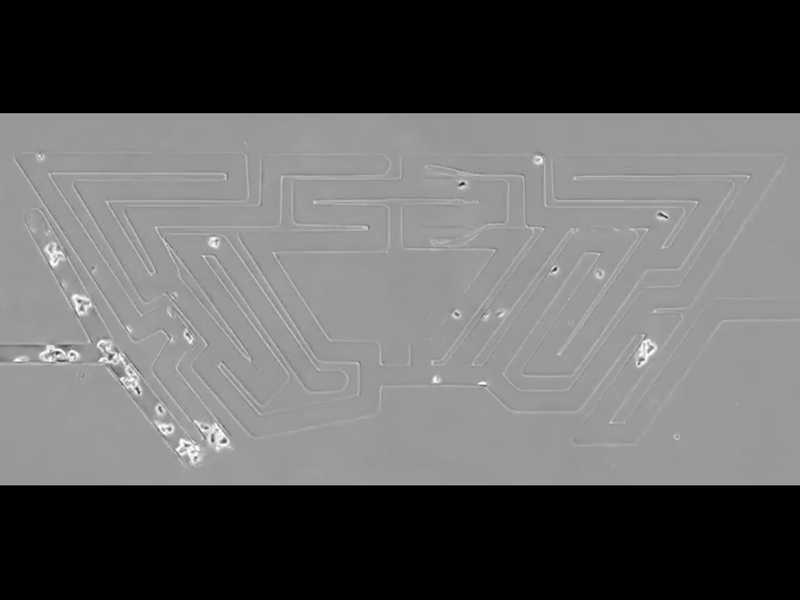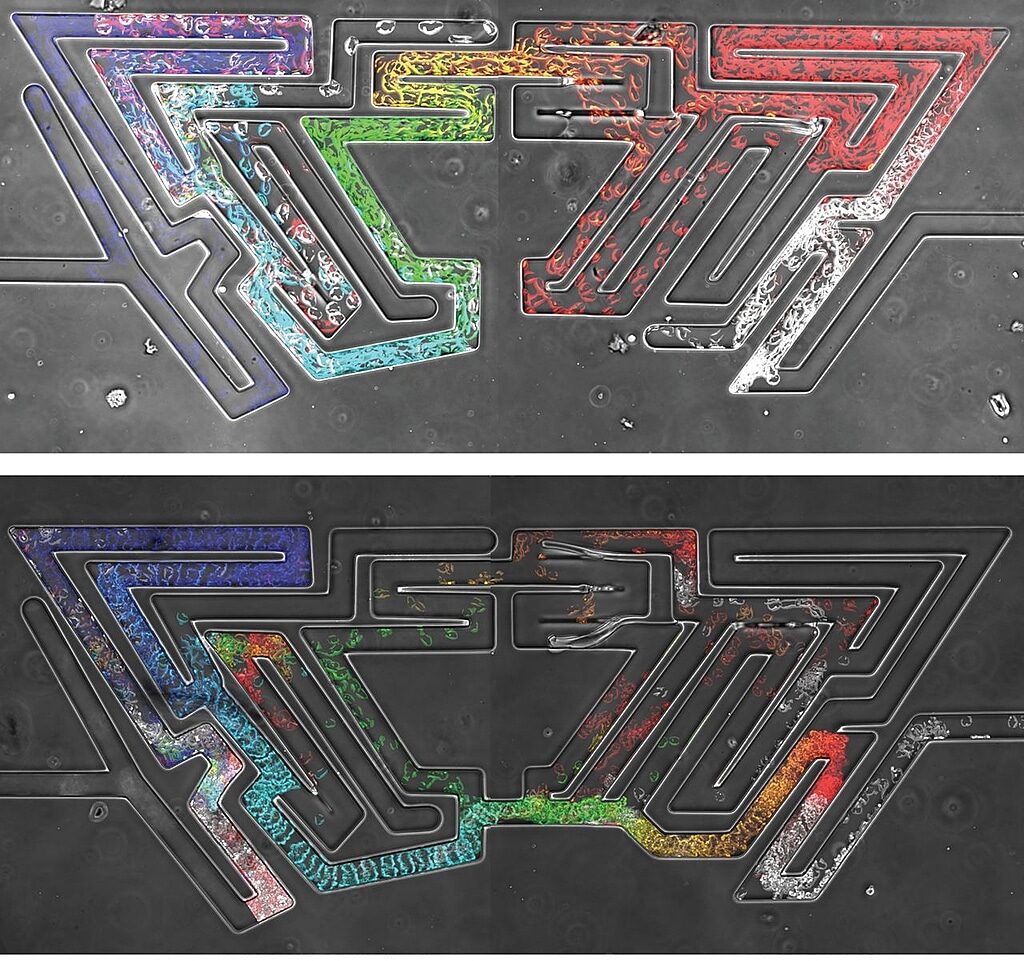
The United Kingdom's oldest surviving hedge maze, the Hampton Court maze, was planted for William III near the end of the 17th century. While other hedge labyrinths were designed with a single winding path, allowing courtiers to comfortably stroll to the center, the Hampton Court maze presents a puzzle. Garden-goers can take wrong turns and hit dead ends, and it takes an average of 30 to 45 minutes for visitors to find the right path.
Amoebas took closer to two hours to find their way through a miniature version of the maze, Brandon Specktor reports for Live Science. In a paper published last week in the journal Science, researchers used the hedge maze as one obstacle course for the study of amoebas' navigational tactics. It was one of the most complicated mazes they pitted the single-celled microbes up against.
"Cells are better at solving these mazes than people because they can sniff out a path before even going in, whereas we can't tell there's a blind corner until we've actually gone in and seen it with our eyes," lead author Randall Insall, a computational biologist at the University of Glasgow, tells New Scientist's Alice Klein.
Much like the smell of cheese might waft through a maze to entice a rat to find the finish line, the amoebas solve their maze by following a chemical signal. The amoebas sought after an acid called adenosine monophosphate that flooded the maze's end.
First, the researchers created computer simulations that modeled their microscopic mazes. The paths full of the amoeba-attracting acid are colored purple, and the amoebas appear as blue ovals. The simulations showed how amoebas sponge up the purple acid and then follow whatever path still has acid flowing toward them.

"As cells approach a junction leading to a dead end and a non-dead end, they slurp up all the chemoattractant from both sides, but only the good side gets replenished," Insall tells New Scientist.
Amoebas travel from areas with little acid to areas with more acid, moving by reaching out portions of their cell and dragging their single-celled bodies forward. Amoebas can detect the presence of the acid in the water around them, which allows them to "see around corners" of the maze and scoot right past dead ends, Insall tells Live Science.
Short, dead-end paths ran out of acid as the amoebas approached, so amoebas didn't usually get lost down them. But longer dead-end branches with deep stores of extra acid looked very similar to the true path, so amoebas only picked the right path about half of the time, per Live Science.
"It's sort of like the old saying, 'the grass is always greener on the other side of the fence,'" Insall tells Live Science. "The cows have eaten all of the grass where they are, and they want to get into the surrounding field where the grass is still growing."
But there was an inescapable limit on the real cells' ability to get through a maze. The researchers also tested a mouse pancreatic cancer cell's ability to traverse mazes, but the cancer cell moves much slower than an amoeba.
That meant that an amoeba could make it through the Hampton Court maze, but the cancer cells died before reaching the end, Lucy Hicks reports for Science magazine. Similarly, even amoebas couldn't escape a model of Scotland's largest maze, the Traquair House maze, before meeting their makers, Insall tells Live Science.
The research demonstrates how many kinds of cells might navigate a complicated environment. For example, immune cells need to race through the bloodstream to reach the site of a wound or infection, Insall tells New Scientist.
"The amount of information cells can read by breaking chemicals down is much more sophisticated than anyone thought," Insall tells Live Science. "That makes us think that most biological problems, where cells have to find their way from one place to another, almost certainly use a mechanism like this."
Theresa Machemer is a freelance writer based in Washington DC. Her work has also appeared in National Geographic and SciShow.




Reader Comments